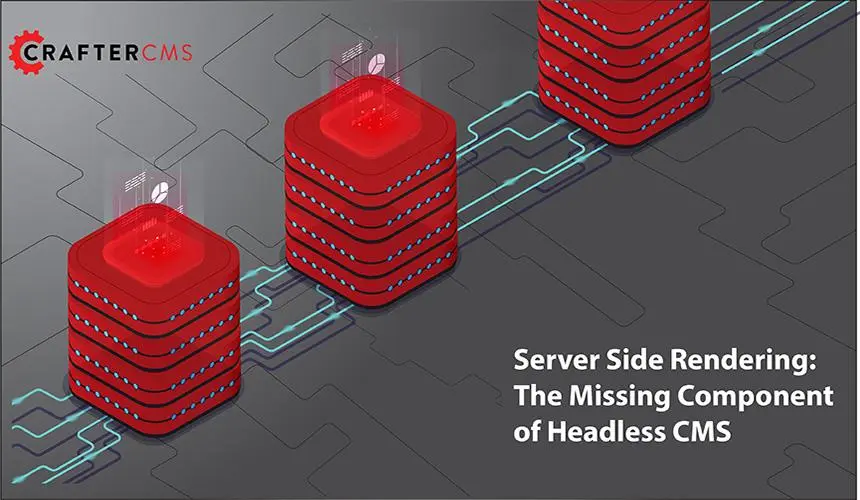Building Your Composable Stack with Packaged Business Capabilities

Amanda Lee

Imagine a toolbox filled with all the tools you need to elevate your business operations. Each tool has its own specific purpose, creating a masterpiece when combined. Packaged business capabilities are like those tools – pre-built, ready to use, and designed to help you streamline your digital experiences.
Enterprises continue to consider composable applications as they shift away from legacy and monolithic approaches, and packaged business capabilities provide the functionality that makes it all possible.
In this blog post, we’ll explain packaged business capabilities and how they fit into a composable technology stack.
Packaged Business Capabilities (PBCs) Explained
Packaged business capabilities (PBCs) are software applications or services developed around a particular business function. These PBCs should be recognizable by business users, even though they encapsulate technical capabilities — consisting of a data schema, a set of services, APIs, event channels, and user experiences.
If you consider a modern technology stack, examples of PBCs include:
- Content management
- Marketing automation
- Customer relationship management
- Digital asset management
- Products and inventory management
PBCs can also be more granular, such as the shopping cart component of an eCommerce platform. PBCs can be as large or small as a business requires as long as it is related to a specific business function.
PBC Key Characteristics
PBCs are business applications that are standalone and can be used independently. However, they can be combined into a larger composable stack as required. In order to enable these capabilities, PBCs need to have the following characteristics:
Modular
Components in a PBC should have a clear business identity and be singular in function. Consequently, these building blocks should be small enough for agility but large enough to stand alone as services.
Discoverable
PBCs should support the needs of both IT and business teams. Everyone within the organization should be able to easily identify and access components and documentation to include them in solutions.
Autonomous
These modular building blocks should be self-contained and easily changeable. Changes to one section of a PBC should not impact the entire system and lead it to fail, allowing each PBC to function independently.
Orchestration Ready
Orchestration readiness relates to how open a PBC is to interact with other applications. It also includes evaluations of the application’s governance and security capabilities. As such, PBCs should have a high level of orchestration readiness, thus allowing them to easily be arranged as needed to support business requirements.
PBCs vs. Monoliths
In a traditional monolithic environment, the capabilities one would associate with PBCs are simply all packaged together as a suite. This limits the ability for these PBCs to be combined and recombined to adapt to change, enable organizations to innovate, and generally solve business problems.
However, when used in a composable architecture, PBCs exemplify characteristics of modularity and autonomy. As such, business users can discover them and use them to orchestrate solutions to different problems.
Unlike a monolithic stack, PBCs can be orchestrated using low code and no code flexibility, giving business users the control they need and making things easier for developers.
PBCs vs. Microservices
PBCs and microservices are often thought of as the same thing, but there is a difference.
Microservices are small, autonomous services that can be used together to create an application. PBCs are pre-built, standardized business functions that can be deployed and integrated without requiring extensive development effort. PBCs are custom combinations of certain microservices that work together to carry out a specific business function.
Microservices, while valuable, can be difficult to orchestrate, particularly for the average business user, as they are complex and difficult to maintain. PBCs remove this complexity and streamline things for business users as they are easier to manage in different environments and use cases.
Why Are PBCs So Critical to Modern Enterprises?
PBCs are emerging quite rapidly, and their growth is driven by the growing movement away from monolithic suites.
Gartner explains that “fixed application experiences no longer meet business and customer requirements. Application leaders managing their organization’s digital transformation must prioritize the architecture of the composable enterprise and packaged business capabilities to succeed.”
Composable enterprises have always been the future of how businesses construct their software stacks and choose applications. However, that feeling has been accelerated as the need to be able to prepare and adapt to unexpected conditions grew in priority.
Benefits of the PBC Approach
Why should businesses adopt PBCs and move away from monolithic suites? Well, there are a number of benefits:
Simplicity
PBCs simplify development by providing an off-the-shelf solution to common business problems. This reduces the complexity of development and deployment, as well as the associated costs and risks, and allows them to be used by non-technical users.
Agility and Flexibility
PBCs enable businesses to quickly and easily adapt to changing market conditions, customer needs, and business requirements. Companies can focus on developing new features and functionality using pre-built, standardized functions rather than creating everything from scratch.
Faster Development and Deployment
PBCs can accelerate development and deployment by providing business users with a solution that is already built and tested. Developers can focus on creating initial PBCs before handing them over to business users to compose into a business-ready solution. By changing who is responsible for the final solution, companies can move pure development out of the critical path, thus allowing them to bring new products and services to market faster.
Increased Scalability
PBCs are highly scalable, allowing businesses to add new capabilities as needed and adapt quickly to changes in demand. That scalability is because they are designed to be modular and can be combined and customized to meet the business’s unique needs.
PBCs also speed up time to market and the speed at which solutions can be found. Since teams are assembling business solutions based on pre-built items and not starting from scratch, there are less intrinsic bugs and problems can be resolved faster.
Smoother Integration
PBCs can be easily integrated with existing enterprise systems. Companies don’t need to feel like they have to start from scratch simply because they’ve purchased a new piece of software, as might have occurred when using a legacy or monolithic stack. Instead, PBCs can be added to these systems, enabling a piecemeal approach toward composability.
Building a Composable Stack With CrafterCMS and Other PBCs
Composability represents the next stage for enterprise architecture, and PBCs are a powerful tool for businesses looking to achieve composability in their technology stack. They offer tremendous benefits relevant to companies today, including reduced complexity and risk, faster development and deployment, and increased agility and flexibility.
When building a composable technology stack, the centerpiece will likely be your content management system, given its crucial role in building digital experiences and supporting other business functions.
CrafterCMS is a headless CMS that provides everything organizations need to build a composable stack. Designed with an “API first” approach, CrafterCMS offers maximum flexibility for businesses that want to mix and match PBCs to suit their needs. For instance, CrafterCMS serves as the central headless CMS within a composable digital experience platform (DXP). You can also leverage CrafterCMS’s pre-built capabilities such as search, profile, and deployment within your platform.
CrafterCMS provides best-in-class authoring for content creators with Crafter Studio. We also offer an extensive marketplace where enterprises can locate PBCs they want for other functions. What’s more, Crafter Studio enables businesses to combine our PBCs with those from different vendors, as well as extend or replace our PBCs to create a custom solution that perfectly fits their needs. The flexibility and versatility of our PBCs enable businesses to build a technology stack tailored to their unique requirements, ensuring maximum efficiency and performance.
Learn more about how CrafterCMS supports the modern enterprise in building a composable stack by reading: What Is Digital Experience Composition?
Related Posts

Building Custom Plugins for a Composable CMS

Amanda Lee

Navigating the Future of Digital Experiences: A Deep Dive into Emerging Trends

Amanda Jones

Building Personalized Digital Experiences for a Cruise Liner

Sara Williams

CrafterCMS Wins More G2 Awards Spring 2024

Amanda Lee










